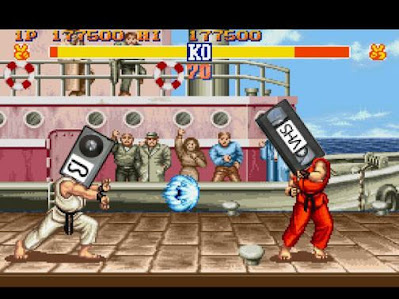E-SPEAIT T2
Pick two technologies/practices/phenomena from the earlier history of the Internet (before the Web, or pre-1991 period) - one which has become obsolete and been replaced by more modern things, and another which survives to this day. Describe them in a blog post.
An interesting event that occurred in earlier history was the "Videotape format war", a period of time where videotape formats were competing fiercely. To begin with the U-matic was an analogue video cassette format introduced by Sony in 1971, it was the very first video cassette format, and all video tape formats prior to this had been open reel. However, it was expensive and not really meant for commercial use. The first commercial videotape was the Philips N1500 VCR format in 1972, followed by Sony's Betamax in 1975, quickly trialing was the VHS format from JVC which I remember my family was more partial to due to it's availability and compatibility with the devices we had. Historical statistics seem to imply that VHS was the more proffered option, and this is largely speculated to be because of the the better marketing strategy VHS had. VHS was an open format, meaning anyone could develop and sell VHS products and tape, however since SONY owned Betamax, they wanted full control over any production relating to the format, which eventually lead to to success of VHS in terms of market share even considering that objectively Betamax was a better format. However, even those video formats eventually fell to wayside when DVD came to being in 1997.
 |
| Source: https://alchetron.com/Videotape-format-war |
Now to speak of something that was developed very early in technological history and still is in use today, but maybe not for long is the BIOS. The Basic Input Output System has been a core part of computer and tech operation allowing firmware to load and provide runtime services for it's operating system and programs in order to utilize higher degree of function. It originates from the CP/M operating system from 1975 standing for Control Program for Microcomputers. The BIOS was originally propriety to the IBM PC's, but has been reverse engineered by companies. The interface of the original bios however has served as the standard since. However, the BIOS is soon to replaced my many chipset manufactures due to the switching to UEFI, Unified Extensible Firmware Interface. The BIOS while certainly seeing updates over the years has become outdated and isn't as sufficient for industry in modern times. It can only boot from drives 2.1 TB or less, and only exucute with 1 MB of space. It has trouble booting and working with multiple hardware devices at the same time. In 2007 Intel, AMD, Microsoft, and PC manufactures agreed on a new UEFI specification as an industry-wide standard. Most computers nowadays run UEFI, but you certainly come across ones being produced with BIOS and since there is no way of switching between UEFI and BIOS, since the hardware must come with new support for UEFI, upgrading older devices will take a long time. UEFI is also not a BIOS replacement, but actually a small operating system running on your systems firmware, with 32 or 64 bit modes providing a higher degree of capability, as well as supporting Secure Boot. Most modern UEFI have a slicker design compared to BIOS as well.
 |
| Source : https://www.freecodecamp.org/news/uefi-vs-bios/ |
Sources:
https://southtree.com/blogs/artifact/history-of-the-beta-tape
https://kodakdigitizing.com/blogs/news/history-of-the-vhs-tape
https://www.britannica.com/technology/videocassette-recorder#ref162377
https://www.howtogeek.com/56958/htg-explains-how-uefi-will-replace-the-bios/
https://thestarman.pcministry.com/asm/bios/index.html
https://www.tech-faq.com/bios.html
Comments
Post a Comment